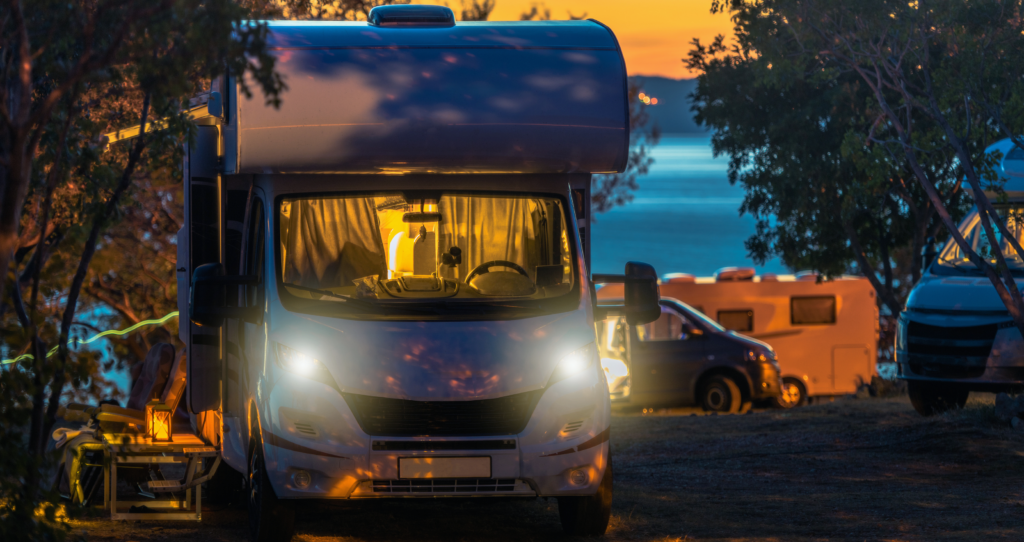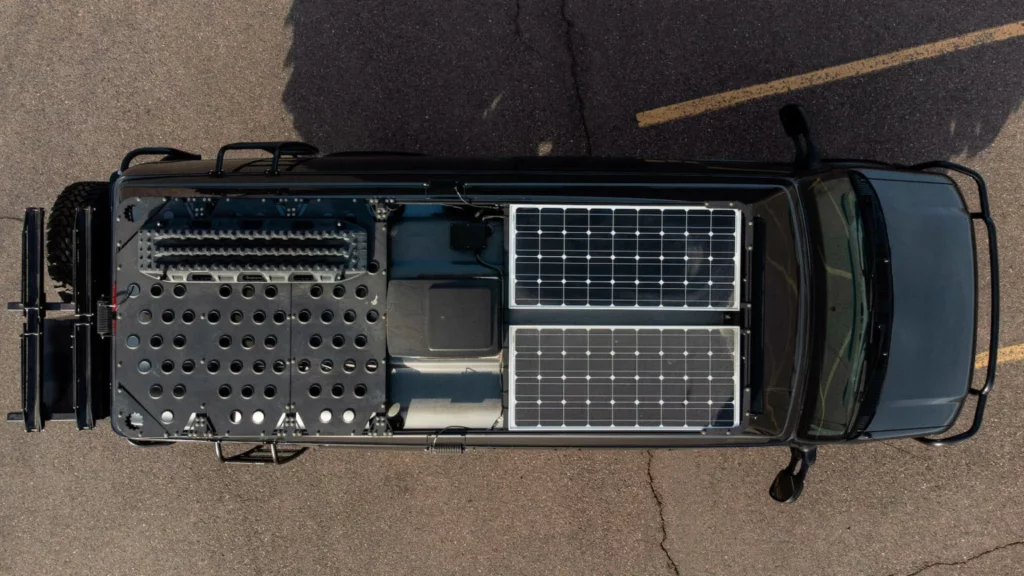After your wheels, tires, and brakes, arguably the most important part of your van is its electrical systems. A good electrical system can mean the difference between a successful off grid adventure and a long, cold, miserable trip (or even a life-threatening situation.)
Your van’s off-grid electrical setup starts with solar panels. In this article, we’ll break down the main types of solar panels for van installations, discuss the pros and cons of each, and determine which type of panel makes sense for what setup.
Ideally, by the end of this article, you’ll be able to determine which types of solar panels are best for your camper van solar system, depending on your budget, available space, how many watts you need, and where you will be parking.
Table of Contents
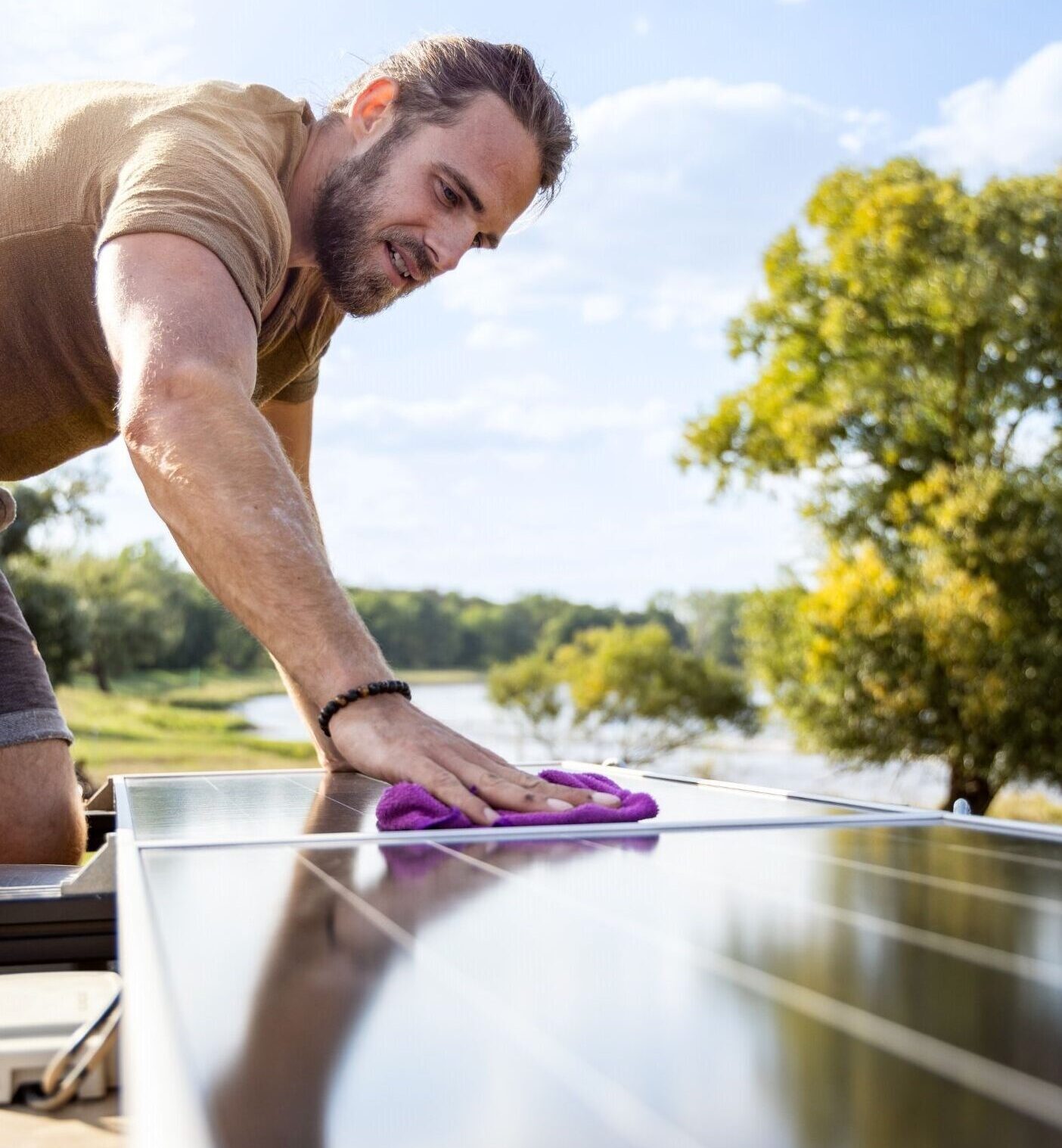
Types of Solar Panels for Van Life
There are several types of van and RV solar panels available. Not only are there different types of solar cells (monocrystalline solar panels vs polycrystalline solar panels vs CIGS panels), but there are also different forms (rigid solar panels vs. flexible solar panels vs. portable solar panels.)
There is no one-size-fits-all option when it comes to choosing solar panels. Let’s break down the pros and cons of each type.
Monocrystalline Panels
Solar panels with monocrystalline cells are the most commonly available type of solar panel. They are made with a single silicon crystal cut into an octagonal shape and fit precisely together with many other single silicone crystals.
Single crystal cells are more efficient panels because electrons can move more freely through than they are able to move through fragmented polycrystalline panels. However, the production process for growing and shaping the crystals in monocrystalline cells is more costly, making the panels slightly more expensive.
Pros
- Commonly available
- Highly efficient
- Good in small spaces – requires less surface area to generate the same energy as a polycrystalline panel
Cons
- Slightly more expensive than polycrystalline panels
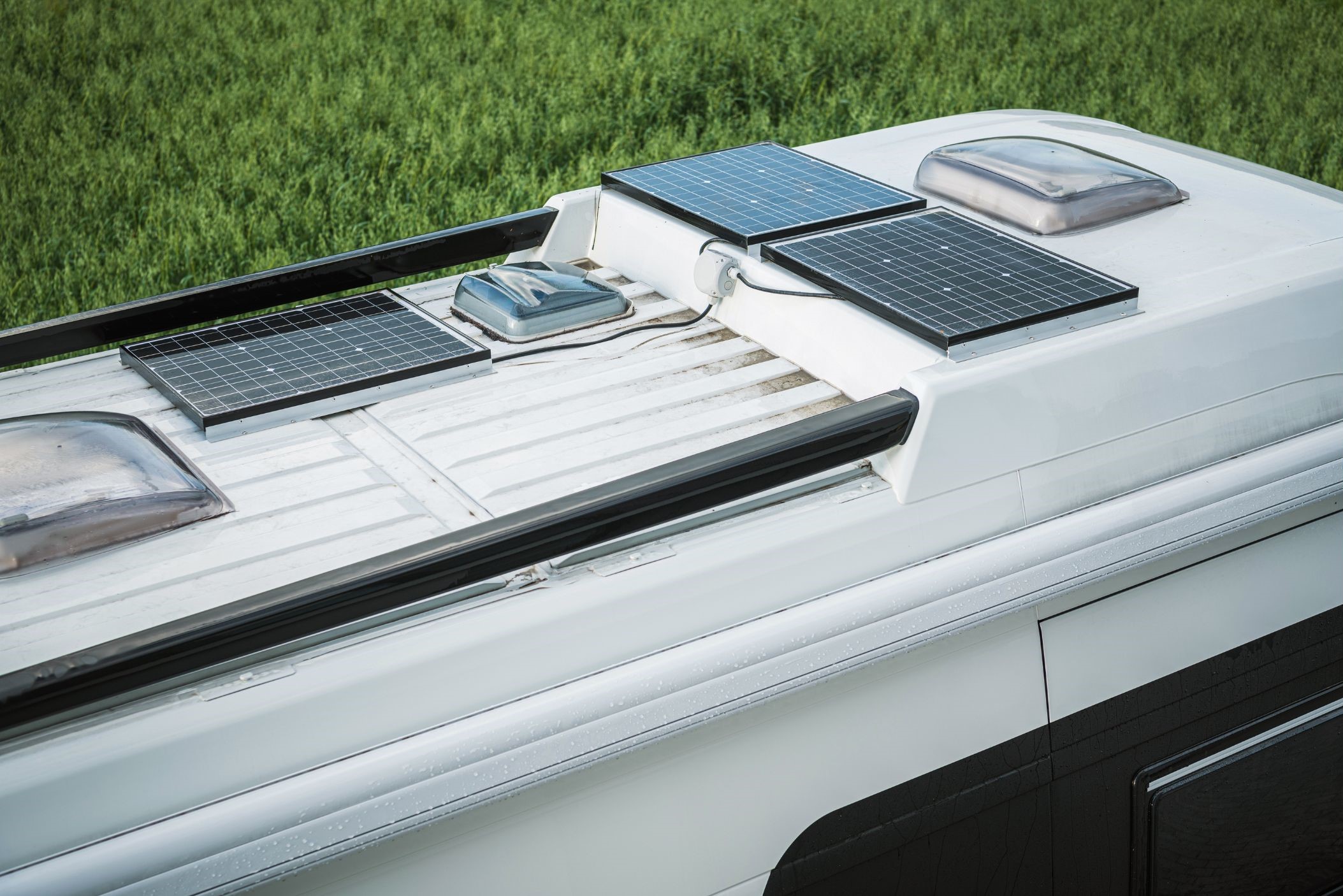
Polycrystalline Panels
Solar panels with polycrystalline cells are also commonly available and frequently used as van solar panels. However, they are slightly less efficient than their monocrystalline counterparts. Polycrystalline panels are made of multiple fragments of silicon crystals that have been melted together to form a cell.
Polycrystalline cells are often made with the cast-off remnants of monocrystalline cells and do not have to be precisely cut, making the production process cheaper and the resulting panels less expensive. However, the irregular, fractured shape of the multi-crystal cells makes it more difficult for electrons to move freely through the panels, meaning they are also less efficient.
Pros
- Least expensive
- Available
Cons
- 15-20% less efficient than monocrystalline panels
CIGS Panels
CIGS (Copper Indium Gallium Selenide) panels are thin, durable and highly flexible solar panels. They are more flexible than flexible monocrystalline panels (we’ll cover those in the next section) and more efficient in low-light conditions.
Unfortunately, CIGS panels are also more expensive than monocrystalline panels (up to three times the price of a regular rigid monocrystalline panel and double the cost of a flexible monocrystalline panel.)
Pros
- Good in low-light environments
- Flexible
- More efficient than monocrystalline panels
Cons
- Expensive
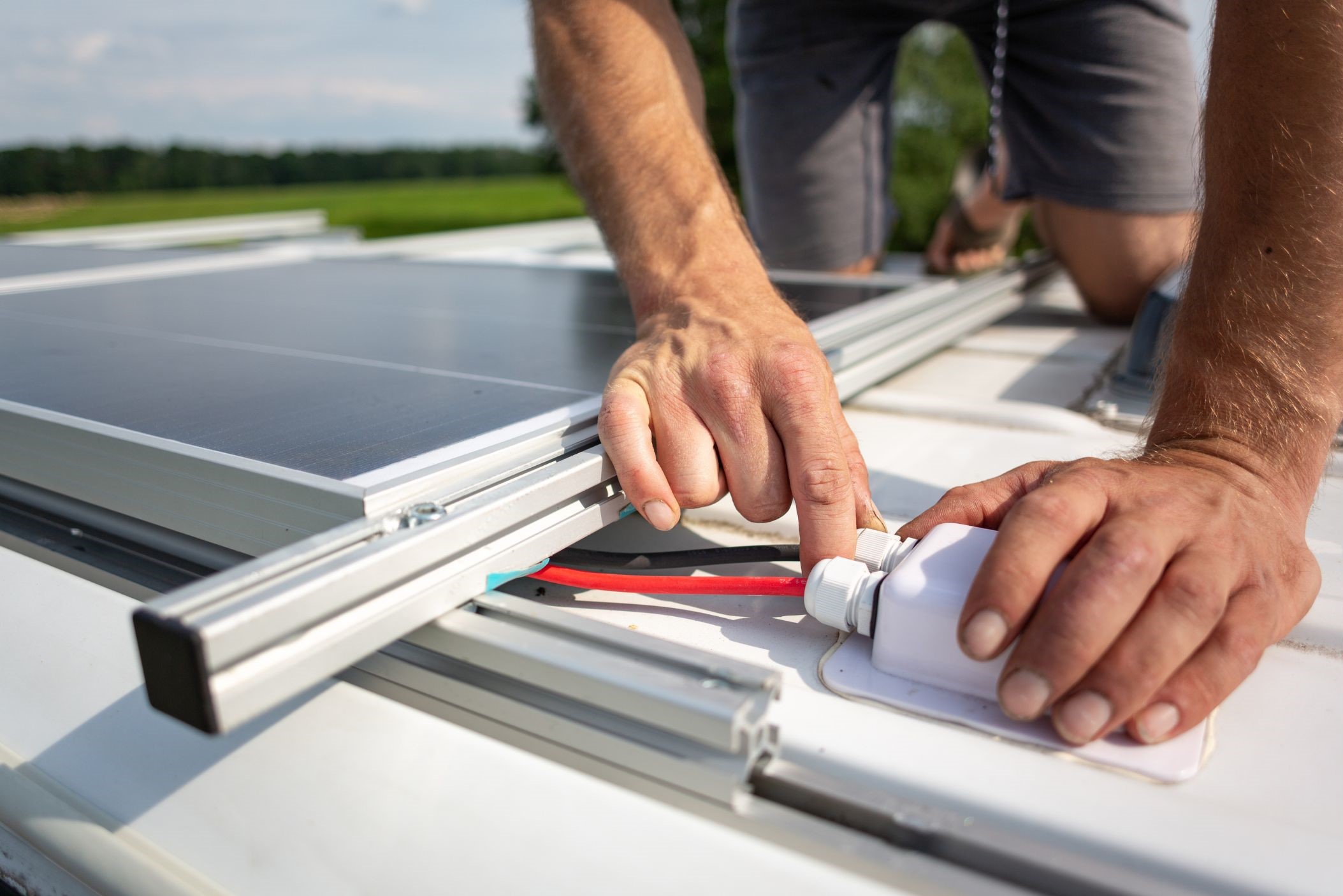
Rigid Solar Panels
The most commonly used type of solar panels for van solar panel kits are rigid panels. These are typically roof-mounted solar panels that have an aluminum frame. Rigid panels are extremely durable, and once you’ve fixed solar panels to your roof, you will most likely never need to move or replace them.
They work especially well on vans that already have roof racks or flat roof space. Installing these solar panels on curved roofs can be tricky, but it’s not impossible.
Pros
- Cheap
- Easy to install
- Durable
Cons
- Don’t work for every space
- Heavy
- Need to drill holes or install mounting hardware
Flexible Solar Panels
There are two types of flexible panels: CIGS panels and flexible monocrystalline solar panels. CIGS panels, as discussed, are highly efficient, durable, and very flexible. Unfortunately, their cost as of the writing of this article is prohibitively high to be realistic for most van lifers.
On the other hand, flexible monocrystalline panels are comparatively cheap (although they are still much more expensive than rigid panels.) They are easier to install than rigid panels, requiring no hardware or holes, and they allow you many more options when it comes to placement on curved surfaces. Unfortunately, a flexible solar panel is also less efficient than a rigid panel.
Pros
- Easy to install – can be stuck down with industrial tape or velcro
- More mounting options
- Lightweight
Cons
- 30-50% more expensive than rigid panels
- Shorter lifespan
- Less efficient
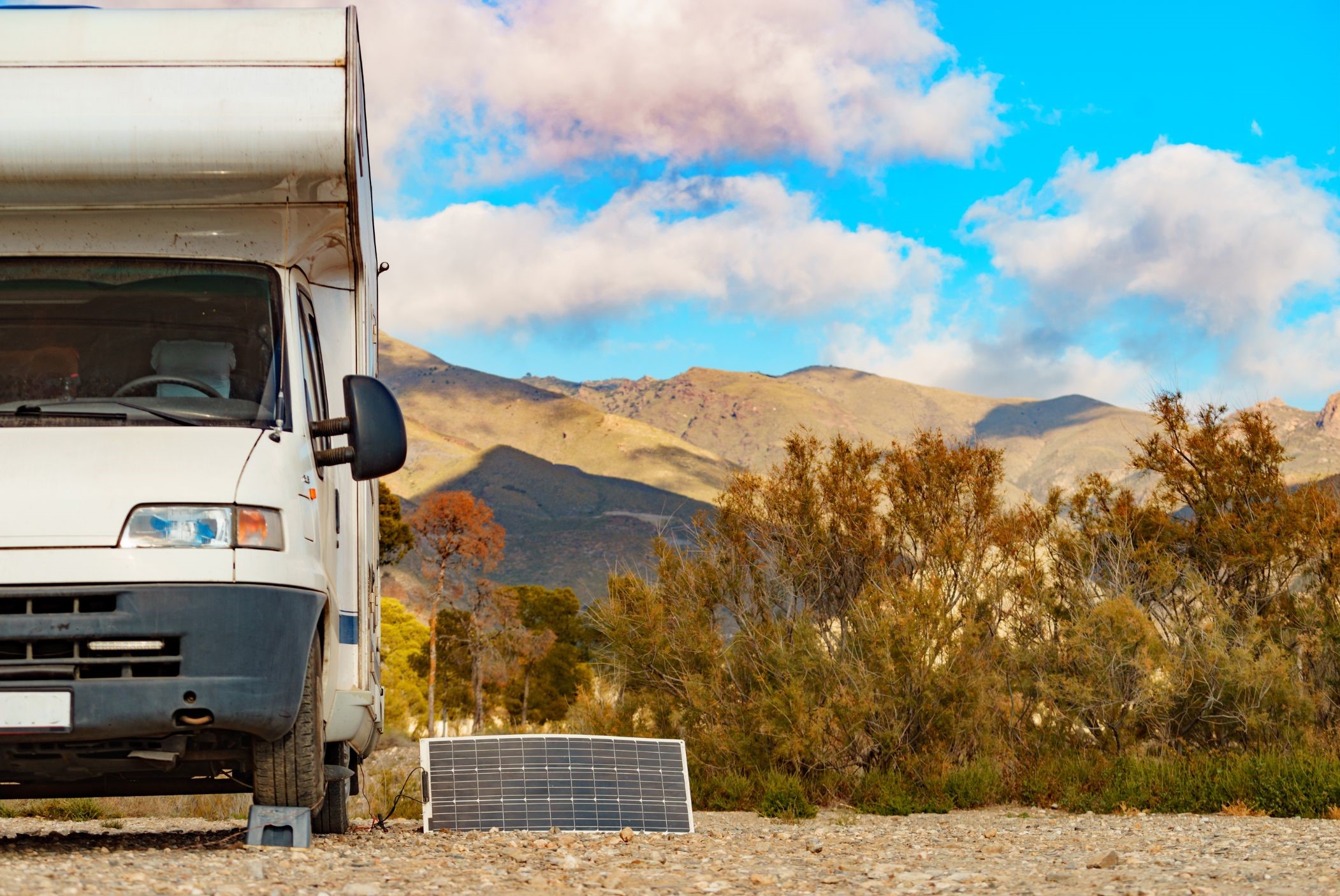
Portable Solar Panels
Portable solar panels can be a nice option for extending your main solar panel array. While you won’t be able to rely on portable panels to provide the bulk of your power output, you can supplement your setup with portable panels for things like charging small devices or powering a small power station.
Portable panels come in sizes ranging from the size of an iPad, capable of charging one device, like a phone, to 10 lb panels capable of powering small appliances. Portable solar panel options are also great for taking on day hikes, overnight backpacking trips away from the van, or other excursions.
How to Choose Solar Panels for Your Van
We tend to think that rigid monocrystalline roof-mounted panels are the best solar panels for most camper van conversion projects. They are cheap, efficient, relatively easy to install, highly durable, and long-lasting. Unless you have a very unique setup (an extremely curved roof, for example, or very limited roof space), we recommend going with rigid monocrystalline panels.
If you live in a part of the world where sunlight is limited (for example, days are short, or cloudy days are frequent) and you can afford it, you may want to consider the superior efficiency of CIGS panels.

How Many Solar Panels Should You Install?
Ideally, when it comes to installing solar panels, you want to install as many as you can fit. You can never have too much solar power! A good rule of thumb is to aim for 300w of solar panel output for every 100Ah (amp hours) of storage capacity in your battery bank.
Remember also that you will never get the full output from your panels (due to low light conditions, movement, shading, etc.) So, aim to overproduce rather than underproduce when you install solar panels. If your battery capacity is around 250Ah, ideally, you want no less than 600w output from your solar panel setup.
Many Small Panels or One Large Panel?
The next question is whether you should install multiple small camper solar panels or fewer large panels. This will depend a lot on your particular roof, but one or two large panels will generally be more efficient than several smaller panels. This is simply because one large panel has more surface area dedicated to solar cells than multiple small panels, which necessarily need space between them and have more surface area taken up by the frames, etc.
When to Consider Solar Panel Kits
You have two options when it comes to buying solar panels and installing them: source all the solar panels, parts, frame, etc. yourself, or buy a kit that comes complete with all the necessary equipment. Complete solar panel kits might be a nice idea if you are a beginner and have no experience with solar power or electrical systems.
There is more to a solar panel setup than panels and batteries. In addition, you also need a charge controller, fuses, cables and wires, solar Y branch connectors, mounting brackets, and optionally, a Bluetooth or smart module if you want to hook the system up to your phone for monitoring.
While it is certainly possible to find all these parts yourself and learn to rig up your own system (and we do recommend doing this if you want to be intimately acquainted with every part of your van’s electrical system), purchasing a kit has its advantages.
Some solar panel kits can actually wind up being cheaper than if you purchased the exact same components separately. It will also save you the time and headache of tracking down all the parts on your own. The disadvantage of using a kit is that it may not come with the exact components you want, so if you’ve already done some research and have an idea of what you need, sourcing the components yourself is probably the way to go.
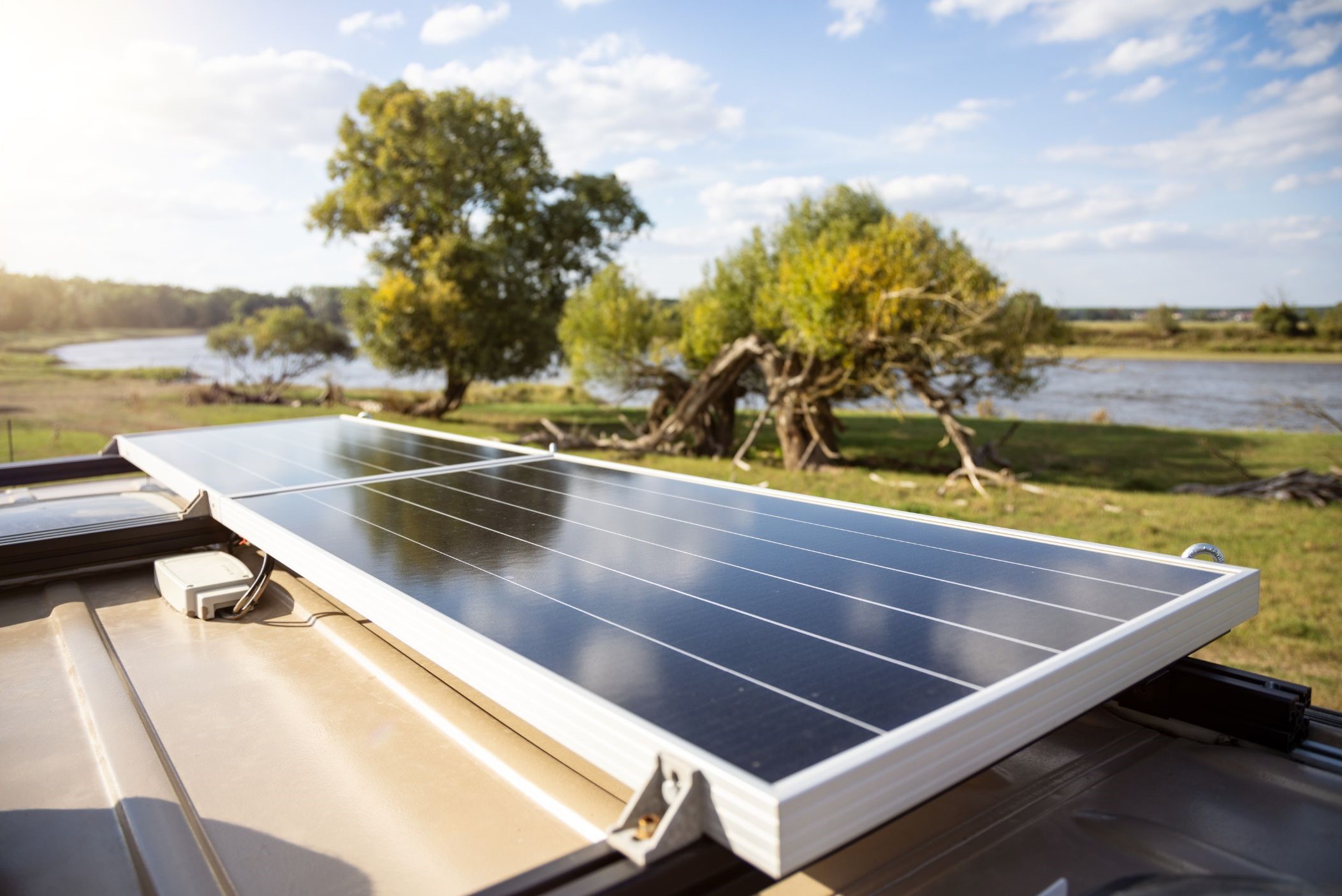
Summing Up
If you plan to take your van off the grid and spend time in remote areas away from shore power, a solid solar system is critical for your van. There are many options on the market when it comes to determining the perfect solar panels for van life. Still, in general, you can’t go wrong with a couple of rigid monocrystalline panels mounted to the van roof, and a supplemental array of a few portable panels to top up small devices and take on excursions.
